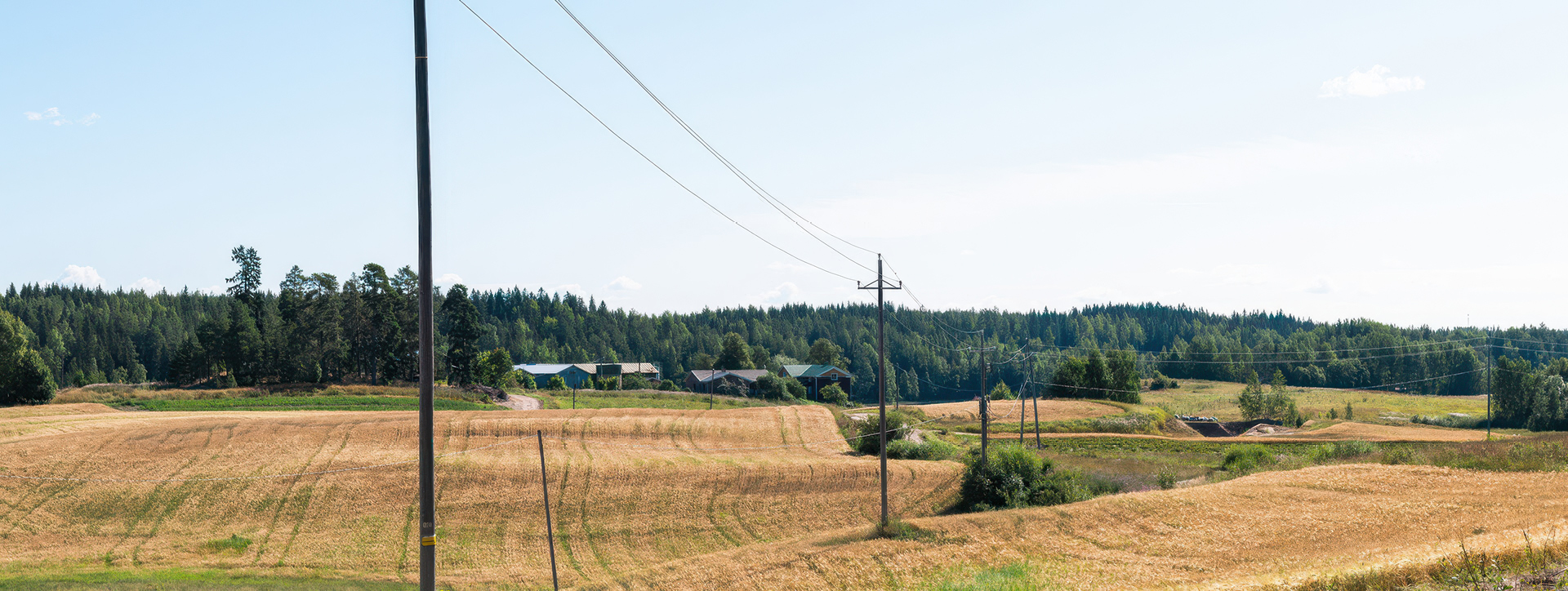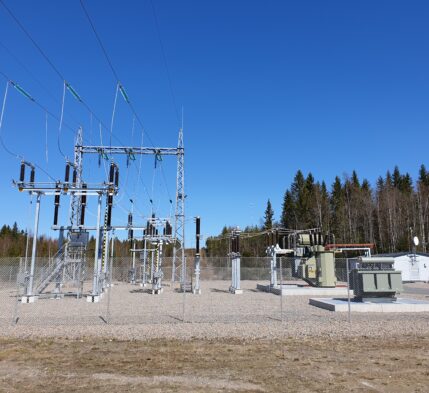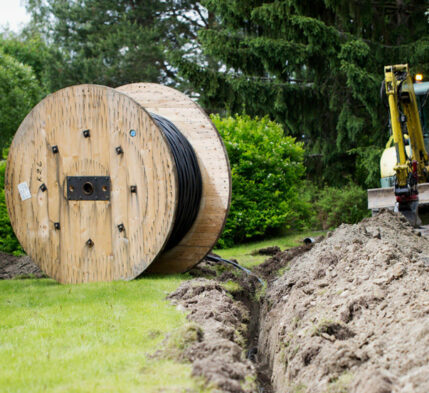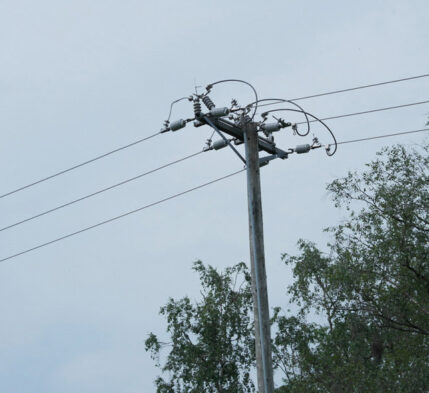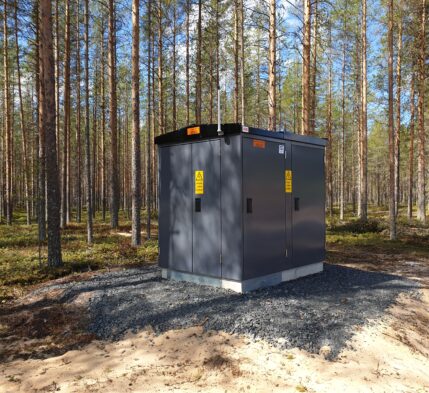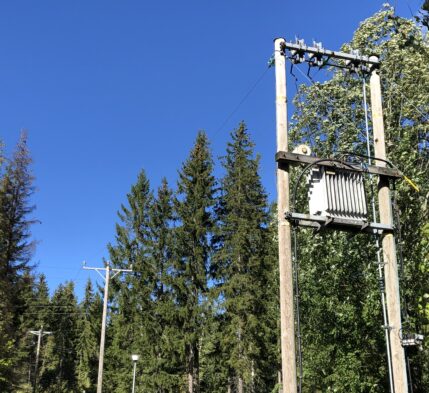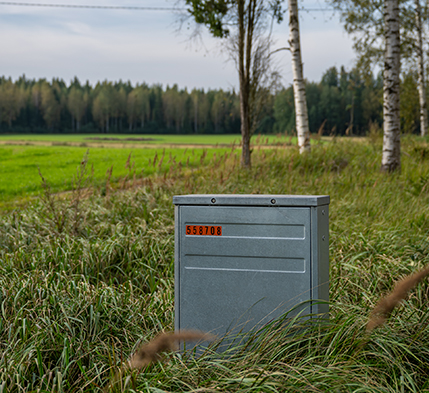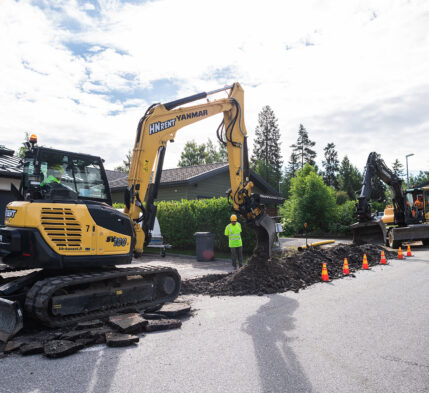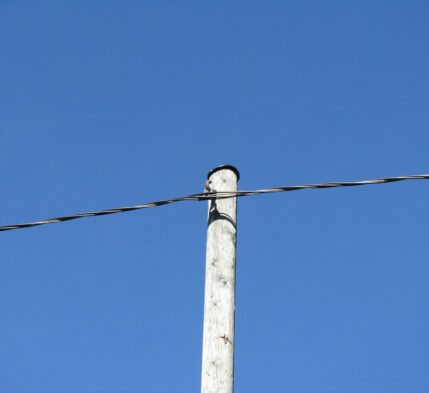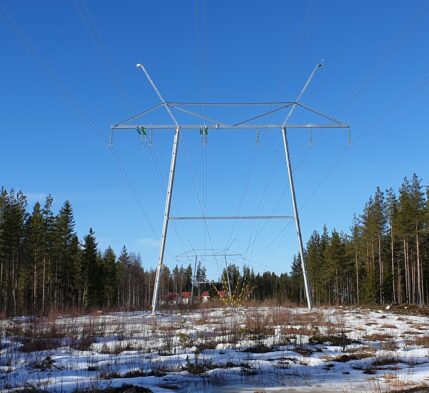
High-voltage open wire 110–400 kV
110, 220 and 400 kV wires are high-voltage wires. The national main grid uses 110–400 kV wires. In addition, 110 kV wires are also used for regional power transmission. High-voltage wires transfer electricity over long distances from power plants to closer to consumption centres.
110–400 kV open wires use different pylon structures. The pylons used outside urban areas are of the guyed, bipedal, gate-shaped type. The pylons used in urban areas are free-standing lattice masts. You can tell high-voltage wires by the length of the insulator chain and the number of insulator plates.
